Illicit Signals Palestine – The Ispal Codes
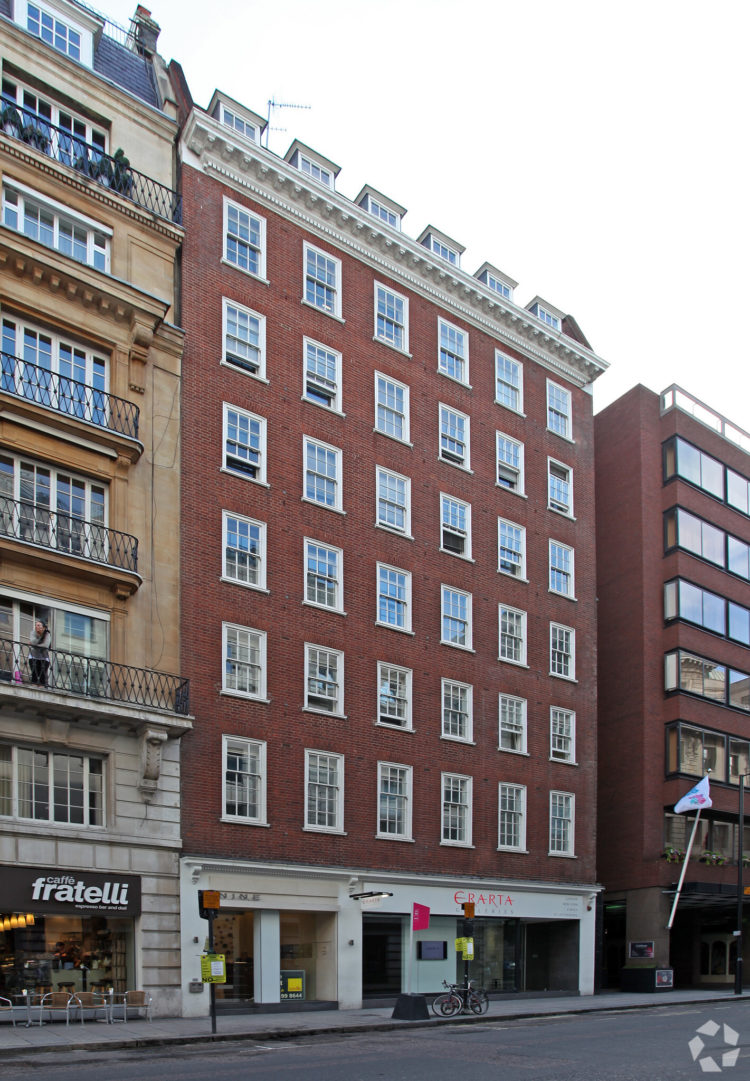
IF READERS KNOW anything at all today about the Second World War, they are almost certain to have heard of the British codebreakers at Bletchley Park. Until the 1970s that story remained a closely guarded secret. British historian David Irving discovered the secret a decade before it was admitted, but as a loyal Briton he agreed not to reveal it.
This ‘Ultra’ secret (as it was codenamed) included the German Enigma code, believed to be unbreakable. Britain’s ability to read encrypted Enigma traffic certainly shortened the war, though we shall never know to what extent. Today the once-mysterious breaking of Enigma is so widely celebrated that one of the scientists involved, Alan Turing, is featured on British £50 notes.
For another half-century after the Enigma story began to be revealed, another story of British codebreaking success has remained secret, with all official documentation locked away at GCHQ – Government Communications Headquarters – the postwar version of Bletchley Park.

Last Thursday I became the first person outside GCHQ to read some of these documents. They add a new chapter to a topic I have researched for several years, which will begin to be published as the first of a series of books later this year – the story of Britain’s tangled relationship with International Zionism.
It’s a story partly of Britain allied to Zionism; partly of Britain at war with Zionism. Most strangely of all, these two global power networks – the British Empire and the largely invisible Zionist Empire, were sometimes simultaneously allies and enemies.
Today I will explain just one aspect of this story – Britain’s breaking of the Jewish Agency’s most secret codes, and in particular the codes of the Agency’s illegal paramilitary wing Haganah, and Haganah’s elite section Palmach. This was a stunning intelligence coup for Britain, but despite losing this intelligence battle the Zionists ultimately won their war against the British Empire. Codebreaking success was outweighed by brutal murder and the economic blackmailing of an empire bankrupted by war.
In 2022 the Second World War is often viewed through the prism of the ‘Holocaust’, with the assumption that International Jewry was somehow the main victim of that war; that Britain and her allies would naturally view ‘rescuing’ Jews as a principal war aim; and that Jewish organisations would be grateful recipients of British and allied sacrifices to obtain their ‘rescue’.
The true story is very different, and what follows is just one aspect of the very different, true history.

In April 1938 – seventeen months before the Second World War started – two policemen serving in Palestine became the first British victims of Zionist terrorism when they tried to defuse a bomb left on a train. This had been planted by Jewish terrorists intending to kill Arab workers at the Haifa oil terminal.
Palestine had been ruled by Britain under a League of Nations mandate since the peace settlement at the end of the First World War, and was considered strategically vital. Two Zionist groups – the Irgun or IZL, and the Stern Gang or Lehi – were to become the main postwar terrorist threat to the British Empire.
Yet these explicitly terrorist groups were in some ways a smaller problem than the theoretically more moderate Haganah. This was a much bigger, illegal paramilitary force, and British officials were perfectly well aware that it was the armed wing of the Jewish Agency, the supposedly respectable body responsible under mandate regulations for official liaison with Britain’s colonial administrators.
As the official voice of Zionism, the Jewish Agency also claimed to speak for Jews worldwide. Its two principal leaders, Chaim Weizmann and his younger rival David Ben Gurion, were to become respectively the first President and the first Prime Minister of the State of Israel.
In their determination to subvert British policy and create that Jewish State, the Agency’s leaders were prepared to use their illegally armed and trained Haganah to make Palestine ungovernable.
At some point in the middle of the war, by late 1942 if not earlier, British security and intelligence agencies had realised that organised Zionist Jewry – theoretically our ‘ally’ in the war against national-socialist Germany – was also our enemy, or at the very least our potential enemy, a serious subversive threat to Britain’s postwar policy.
Britain’s codebreakers at GC&CS therefore targeted Zionist codes with the aim of discovering information about illegal Jewish immigration into Palestine, arms purchases, terrorist plots and other valuable intelligence about this dangerous enemy. While the military codebreakers and others were famously based at Bletchley Park, the ‘diplomatic’ codebreaking section of GC&CS was based in one of London’s most exclusive districts, Berkeley Street, Mayfair. It was from here that the codebreakers focused on their Zionist foe.
During 1942-43 they broke two sets of Jewish codes, which they at first termed Ispal I (relating to Haganah), and Ispal II (relating to its parent, the Jewish Agency). ISPAL was an acronym for Illicit Signals Palestine.
From 1944 Ispal I was renamed Isoats or simply Oats (in 1947 again redesignated Isfog or simply Fog); and Ispal II was renamed Istria.
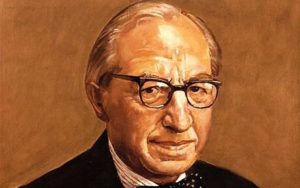
Under its various labels, the codebreaking effort against International Zionism became one of Britain’s greatest secrets. Just as with Enigma during the war, it was crucially important not to allow the Jews to realise that their encrypted communications were being read in London. But there were several special problems with targeting Jews rather than Germans.
One problem was that while numerous Britons spoke German, a fair number being bilingual, very few Britons had any proficiency in Hebrew. Those that did had almost always been educated in Biblical Hebrew, not the 20th century version, and/or were essentially Arabic scholars with a secondary ability in Hebrew.
Inevitably the few people available in England who were proficient in Modern Hebrew were Jews, and the files contain discussions about the extent to which even Jews resident in Britain for generations could be relied on when dealing with Zionist targets. Whose side would they be on? The chief of British intelligence service MI6, Sir Stewart Menzies, writing to the Foreign Office in March 1944 about one such doubtfully loyal translator Bernard Lewis, concluded:
“Lewis has been engaged on his present work on ISPAL II for a year or more, and it is clear that if he had been responsible for any leakage, this would have been reflected in the material itself. It would clearly be preferable not to employ a Jew on this particular work, but the language difficulties make it virtually impossible to find anyone else.”
This same Bernard Lewis was to become one of the most famous Orientalist scholars of the postwar decades. In 2006 he was one of the earliest Jewish commentators to peddle the notion that Iran would be a nuclear ‘threat’. The precise nature of his dual loyalties, to Zionist Jewry or to his British (and later American) countries of residence, remained unresolved.
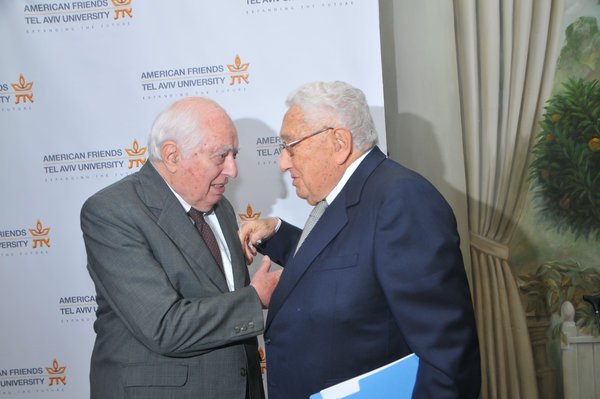
Translators such as Lewis in any case understood only small parts of the overall intelligence and codebreaking picture. By the end of the war and the intensification of a new war against Zionist terror, ‘Oats’ was a crucial weapon in the British armoury. The senior British commander in Palestine, Sir Evelyn Barker (himself later targeted by Jewish assassins) wrote: “we are entirely dependent for our only absolutely reliable information” on these decrypts.
In the autumn of 1945 Britain’s new Labour government surprised the Zionists by rejecting the idea of a Jewish state and continuing the policy in force since 1939 of strictly restricting Jewish immigration into Palestine. The terrorist war flared up with a new intensity, and the theoretically ‘moderate’ Haganah began collaborating secretly with its supposed ‘extremist’ rivals Irgun and Stern Gang.
To the British mandate’s rulers it was difficult (even with the advantage of breaking the Oats and Istria codes) to know to what extent any Jewish group could be trusted. Most especially, it was difficult to confront Haganah and the Jewish Agency, exposing the self-serving lies and hypocrisy of ‘moderate’ Jews, without giving away the fact that we were reading their most secret communications.
Matters came to a head on 29th June 1946 with ‘Operation Agatha’. Aided by their ability to read Jewish codes, British authorities launched large-scale, precisely targeted raids on Jewish leaders and their offices across Palestine. Abandoning the polite fiction that the Jewish Agency and Haganah were the ‘respectable moderates’, British forces seized their officials and confiscated their records. Palestine’s High Commissioner, Gen. Sir Alan Cunningham, wrote that thanks to the codebreakers: “we have unimpeachable evidence” that two of the Agency’s main leaders – David Ben Gurion and Moshe Shertok – “direct the Haganah”.
Other decrypted messages showed detailed discussions between Ben Gurion and the Haganah’s commander Moshe Sneh (who also represented the supposed ‘moderates’ on a joint committee with the ‘extremist’ Irgun and Stern Gang).

Ben Gurion could not be arrested as he was in France, but enormous damage was done to the entire Zionist subversive apparatus. Their illegal radio station Kol Israel wailed:
“The English Nazis have declared war on us. It should be clear to everybody that we shall retaliate. We shall fight the Palestine Titus.”
This was a reference to the Roman Emperor Titus, who with his father Vespasian crushed Jewish power in 70 AD, destroying Jerusalem and its Temple. While US President Harry Truman might not have known too much classical history, he did know about Jewish political power in 20th century America. Mid-term congressional elections were approaching, and Truman knew that Jewish lobbyists could swing many crucial House and Senate seats.
In turn, this was bad news for the British government who were struggling to introduce a socialist welfare system, in a country bankrupted by six years of war. Foreign Secretary Ernest Bevin was ultimately responsible for the Palestine policy, and he had few illusions about the enemy he and the British people faced. As a trade union leader during an earlier economic crisis, Bevin had openly stated: “It is a game of Shylock versus the people, with Shylock getting the pound of flesh every time.” At the end of 1945, this time in the secrecy of a Cabinet meeting, Bevin used similar imagery: “We [the British government and by extension the British people] are in Shylock’s hands”. This observation was so incendiary that it was not typed into the official Cabinet minutes, but appears in the handwritten notes of that meeting taken by a senior civil servant.
“I hate the idea of getting under US control. But the situation I’m faced with is – can you carry through British people for next three years on lower rations. I believe our bluff is called. We can’t ask them to face another three years of even tighter living – with industrial unrest. We are in Shylock’s hands.”
These same hands of Shylock compromised the security of Britain’s codebreaking effort against Jewish terrorists in Palestine. After the ‘Operation Agatha’ arrests, Zionist leaders pressured Truman, who in turn pressured the British. Even though the Americans had been our wartime allies, we could not simply ask them to take on trust that we had good reasons for arresting the Jewish Agency leaders. We had to offer them some sort of proof, and fatally this meant giving away the fact that we knew the truth about the Agency’s responsibility for directing the paramilitary Haganah, and its cooperation with other terrorists, because we could read their most intimate private communications.

Documents released to the UK National Archives last Thursday make clear that to begin with, ‘Operation Agatha’ was a great success; the deputy chief of the British intelligence unit in Jerusalem reported on July 3rd 1946:
“Army operation achieved element of surprise. Hagana intelligence, normally well informed in advance of authorities’ intentions, learned of only one of 25 searches. …As a result no changes in Palmach dispositions made and no security precautions taken with respect to documents. …This borne out by capture of Palmach office plus card index at Mizra.
“…Impression from traffic is that organisations are stunned and Palmach temporarily dislocated.”
A further report on July 15th explained that the raids had also achieved the important objective of creating political confusion within the Haganah and Jewish Agency Executive, as well as making the Jews even more paranoid about the possibility of informers within their own ranks.
MI5’s chief Jerusalem representative – former Oxford Union President and baronet Sir Gyles Isham – urged that the British authorities should avoid releasing any evidence that gave away the codebreaking secret. “The compromising of these sources will result in the loss of all incontrovertible information available to us about the illegal activities of the Jews. …I would most strongly urge that the security of this information be not compromised unless overriding political considerations render this absolutely unavoidable. I hope means may be devised that if the information has to be utilised its source may be disguised.”
Isham also warned that due to “present lack of reliable Hebrew translators, examination of captured documents is a slow process and will take a long time.”
Unfortunately both of these factors worked against what had originally been a highly successful anti-Jewish operation. Under American pressure, the British government did effectively give away the fact they had broken Jewish codes; and it turned out that the Jerusalem authorities didn’t have “a long time” to examine the captured documents.
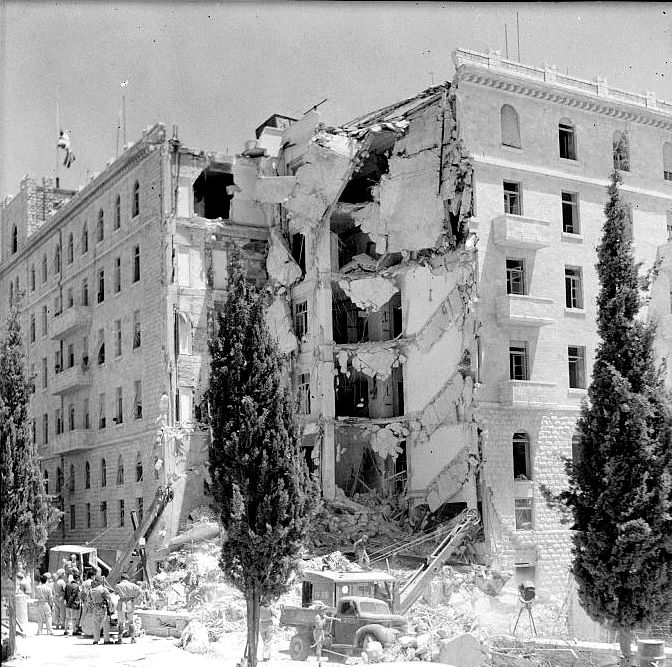
On 22nd July 1946, just over three weeks after Operation Agatha, Irgun terrorists planted explosives in the basement of the King David Hotel, British military and intelligence headquarters in Jerusalem. Though the bombers were from the Irgun, the operation had been planned with Haganah commander Moshe Sneh. Its main objective was to destroy intelligence records including material seized during Operation Agatha. Jewish leaders realised that they had to destroy these records before British intelligence could translate and analyse the material. Given time, Britain would have obtained a decisive advantage in the long war against Jewish subversion.
An ‘Oats’ decrypt proved that just half an hour before the explosion, Haganah officers were expecting and planning for a major event and large-scale curfew. An MI5 analysis showed that despite earlier factional divisions and many denials and excuses that persist in 2022, Jewish groups had been working together to plot the attack:
“Irgun Zvai Leumi, Stern Group and that part of the Palmach and Hagana which is led by Moshe Sneh are now very close together. Sneh is furthermore said to have been informed in advance of the intentions of the Irgun Zvai Leumi with regard to the King David Hotel, although the ‘Jewish Resistance Movement’ as a whole were authorised to disclaim responsibility.”
Nevertheless, the bomb had succeeded not only in causing 91 deaths, but in destroying the ‘Registry’ section of British intelligence headquarters and many documents. In a pre-computer age, this physical destruction of documentary evidence and records was a disaster.
Giving away the codebreakers’ secret also had serious and predictable consequences. Most of the codes were changed and it became more difficult to decrypt Jewish correspondence. But the encouraging news hidden in newly released files is that (contrary to some historical accounts) we can now see that the codebreakers eventually had further successes. Although they stopped being able to read Palmach codes, for example, in November 1946, they succeeded again in March 1947.
One of the first successes of this renewed codebreaking effort allowed British intelligence to monitor Haganah and Palmach terrorist plots against German prisoners-of-war (for example a convoy of 300 German prisoners being transported across the Palestine border from what is today Jordan). The GCHQ records clearly state that the Jewish terrorists had “both planned and executed operations” against Germans in Palestine postwar.
Among the advantages gained from codebreaking were insights into Zionist tactics of bribery and blackmail. In 1945 Palmach agents approached a Jewish graphologist working for the British Palestine Police, to destroy fingerprint evidence in an important case against a Palmach member. Similarly in 1946 ‘Oats’ decrypts suggested that the Haganah planned to threaten a government scientist, forcing him to destroy evidence in an anti-terrorist case.
The newly released documents form part of a real history of the mid-20th century relationship between British intelligence and Zionist Jewry. We are making rapid progress in uncovering and analysing that real history. H&D readers will soon learn more about how we plan to publish our findings. As George Orwell put it in 1984:
“Who controls the past controls the future. Who controls the present controls the past.”
As we uncover more of the true documentary record, it will become increasingly difficult for the enemies of historical truth to enforce their versions (in courts and elsewhere) as unchallengeable ‘holy writ’.
By fighting to document real history, we are taking back (at least in part) control of our present, and therefore control of our past. And we are laying the foundations for our people to control their future.
* * *
Source: Heritage and Destiny magazine



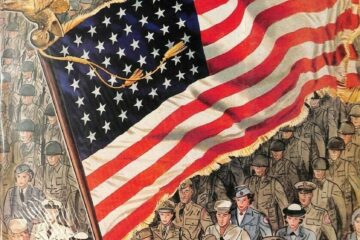


After all of the tremendous effort and accomplishment of highly skilled and dedicated Britons in containing the Jewish threat, it all came down to little Harry Truman wanting to be President again. Of course, Harry had been bought and paid for years earlier and one thing about Harry, he stayed bought. Please note, the advantage the Jews had in this war is that they were “allies.”
If only we’d sided with Germany, we’d no longer be “in Shylock’s hands”.
The turning point that got the British out of Palestine, was the Irgun response to Britain’s hanging of ten Jewish rebels … Menachem Begin took the decision to kidnap and hang two British sergeants in July 1947. A photo of the dangling bodies appeared in the UK press, and massive anti-Jewish riots took place in Britain. Sickened about it all, Britain stopped hanging Jews, and prepared its exit; Israeli independence was declared 10 months later.
The barbarism of death by hanging – in fact slow strangulation, even if long-drop neck-breaking succeeds in inducing a coma – moved both sides more than the larger number of deaths in battle or the King David Hotel bombing.
…and the dirty Jews even booby-trapped
the dead bodies with explosives. Jews
will be Jews.
My take on the “great” British codebreakers and ENIGMA is that a traitor in one of the Eastern European German allies actually sold an Enigma machine to the British jews which allowed the Brits to reverse engineer the machine. Another jew myth busted.